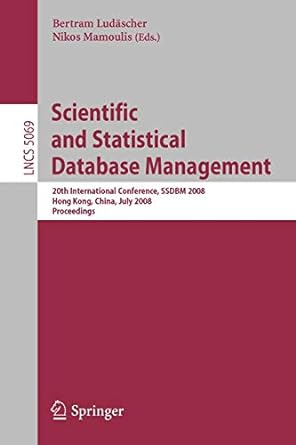Question
In this lab, you are provided with a program that contains bugs. Your task is to debug it and get the program to a working
In this lab, you are provided with a program that contains bugs.
Your task is to debug it and get the program to a working state.
You must rename the file crypto.pyand submit a working version.
'''crypto.py
A program implementing a simple encoding scheme.
The goal is to generate an unreadable stream of numbers
from some text input given a codec and an encryption key.
The same codec and key can be used to decrypt messages
created using the same encoding scheme.
The encoding scheme itself is based on a simple substitution
rule whereby each character is assigned a numeric value in
the codec. This numeric value is then added to the key during
encryption and the result modulo 100 (the number of printable
ascii characters) is returned. Decryption works in reverse.
'''
import string
def encode_char(char, ctx) -> int:
'''Generate a numeric value based on the
char argument
Args:
char(str): a single character to encode
ctx(dict): a dict containing the encryption
codec and key
Returns:
int: the generated numeric value
'''
codec = ctx['codec']
key = ctx['key']
return (codec[char] + key) % 100
def decode_char(code, ctx) -> str:
'''Retrieve the original character which
produced the code passed in
Args:
code(int): a integer produced by encoding
ctx(dict): a dict containing the encryption
codec and key
Returns:
str: the decoded character
'''
index = (code - ctx['key']) % 100
chars = list(ctx['codec'].keys())
return chars[index - 1]
def encode_msg(msg, ctx) -> str:
'''Encode a message based on the
provided encryption context
Each character in the message is encoded based
on the specified codec and key and the resulting
value is padded with zeros if it has less than 3 digits.
Args:
msg(str): the plain text to encode
ctx(dict): a dict containing the encryption
codec and key
Returns:
str: the encoded message
'''
encoded_msg = ''
for char in msg:
code = encode_char(char, ctx)
if len(code) != 3:
code = '0' * (3 - len(code)) + code
encoded_msg += code
return encoded_msg
def decode_msg(secret, ctx) -> str:
'''Decode a message based on the
provided encryption context
The message is decoded three characters
at a time yielding a zero-padded value of
length 3 which must be converted to an int.
Args:
secret(str): the encrypted message to decode
ctx(dict): a dict containing the encryption
codec and key
Returns:
str: the decoded message
'''
decoded_msg = ''
while secret:
code = secret[:3]
decoded_msg += decode_char(code, ctx)
secret = secret[3]
return decoded_msg
def main() -> None:
'''Create the codec and ask the user
to provide the encryption key, which is
a number between 1 and 99.
The key and code become the encryption
context, which is passed to the cipher
functions, i.e. encode_msg and decode_msg
'''
# create context
codec = {}
for index, char in enumerate(string.printable, start=1):
codec[char] = index
# Get encryption key from user
key = input('Enter a number between 1-99: ').strip()
# Encryption context
ctx = {
'key': key,
'codec': codec
}
original = '''
Cryptography is the study of secure communications
techniques that allow only the sender and the intended
recipient of a message to view its contents.
'''
print('Original message')
print('-' * 50)
print()
print(original)
secret = encode_msg(original, ctx)
print('Encoded message')
print('-' * 50)
print()
print(secret)
print()
message = decode_msg(secret, ctx)
print('Decoded message')
print('-' * 50)
print()
print(message)
if __name__ == '__main__':
main()
Step by Step Solution
There are 3 Steps involved in it
Step: 1

Get Instant Access to Expert-Tailored Solutions
See step-by-step solutions with expert insights and AI powered tools for academic success
Step: 2

Step: 3

Ace Your Homework with AI
Get the answers you need in no time with our AI-driven, step-by-step assistance
Get Started


